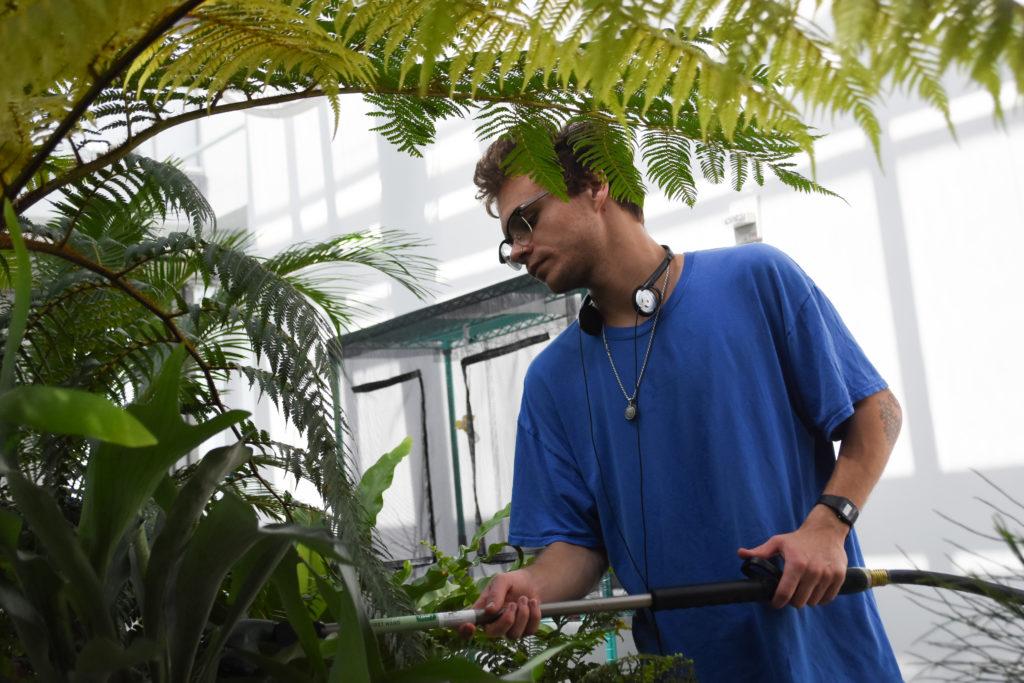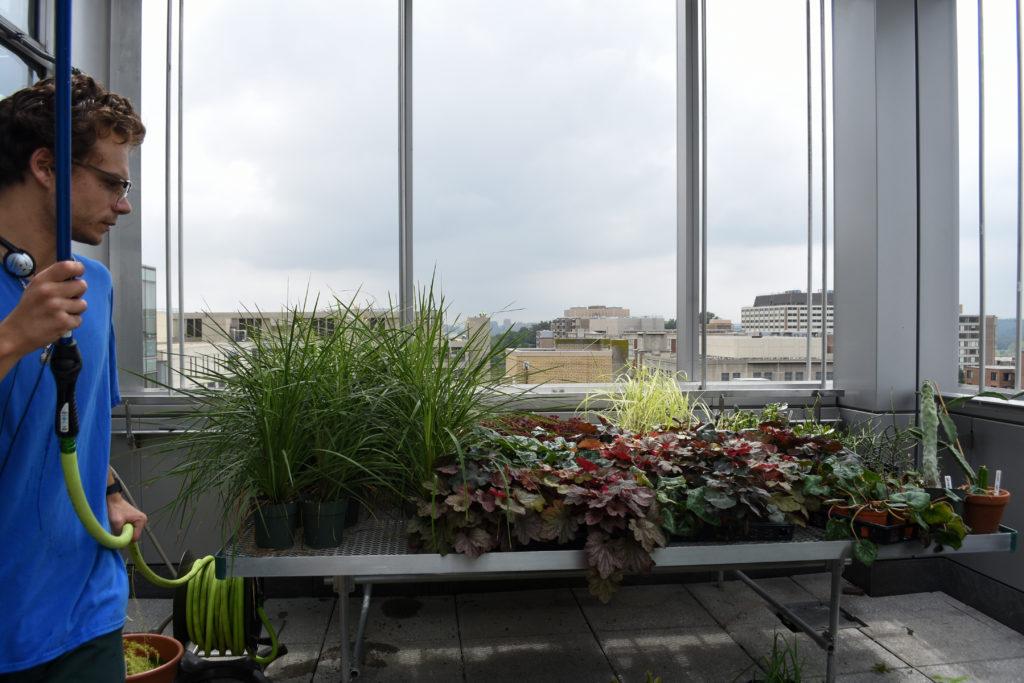On the top floor of the Science and Engineering Hall, plants, bees and fruiting flowers sit in a nursery side-by-side in line with the D.C. skyline.
The Wilbur Harlan Greenhouse opened on the eighth floor of SEH more than a year ago as a research greenhouse for scientific projects and rare species of plants. But even after a year of operation, the greenhouse remains an untapped green space on campus where students conduct research across several departments.
During open hours each Friday, students can tour the plant selection or devote hours to volunteer from 10 a.m. to 2 p.m.
Rachel Klein, the greenhouse manager, said leaders in the space began hosting plant sales last year and pushing the money earned toward funding students’ research projects.
“It’s really important for people to have a space where they can conduct this type of research because we’re one of the only research greenhouses in the city,” Klein said.
To apply to work in the space, students propose projects to Klein and others, and if accepted, students are allotted a budget for the resources needed to fulfill their project.
Eden Smalley, a senior studying mechanical engineering, was one of the students whose project first inspired the greenhouse’s plant sales. Smalley, along with two students who have now graduated, designed an aquaponics project that used the nutrient-rich excretions of koi fish and goldfish to fertilize plants above the water.
Smalley said on an urban campus, places like the rooftop greenhouse are especially important.
“We’re also a city school, so we like to push the idea of how to make urban life coincide with agriculture, and it’s doable,” she said.
Upon entering, a netted enclosure holds butterflies in an active experiment conducted by Arnaud Martin, an assistant professor in the biology department. The first of its three rooms contains a timeline of plant history. Klein said she curated the wing for a course on plant evolution and taxonomy. Its catalog ranges from algae and ferns, which originated on Earth millions of years ago, to the newest evolved angiosperms, which are flowering or fruiting plants, she said.
Although the greenhouse is not partnered with specific organizations on campus, it has worked with several organizations on campus to operate.
The Textile Museum contacted Klein about a month ago to collaborate on an exhibit, she said. The museum will work on a showcase of different types of dyes, and the greenhouse will host a corresponding exhibit with the dyes’ plants of origin.
Although the greenhouse rarely grows vegetables, Klein said it features a wide variety of tropical fruits and plants – coffee, papaya and mango – which were the research focus of the primary donor to the greenhouse. The late benefactor Harlan, who earned a degree in botany, was a specialist in tropical fruits at the U.S. Department of Agriculture, and there is an entire collection in the greenhouse dedicated to his life’s work, Klein said.
“He didn’t have any children, so he just left his money to us and I think we use it pretty well, try to do things that he would be interested in,” Klein said.
Scott Dai, a senior studying biology, worked on a project in the greenhouse that replicated coastal agricultural fields, which exist in Maryland counties but are two to three hours from campus. Dai said since December, the space has allowed him to perform fieldwork that couldn’t normally be done in D.C.
“When you think about science, there are a bunch of different things, and even in ecology, which is what I study, there are different sub-branches,” Dai said. “Working in this lab and working on this project in the greenhouse has made me a little bit more confident in which route I want to take.”





